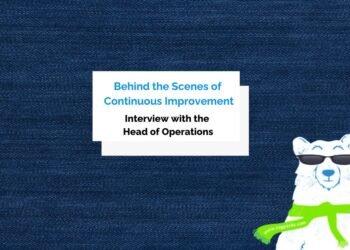
Tips on making time by managing your energy, aligning learning with the business and personalizing your path.
Each September, the air is full of ‘back-to-school’ energy. When white pants are out, fall semesters and fresh notebooks are in.
But while students return from summer break refreshed and recharged, communicators often think of this time as more of a scramble than a rest. Q3 campaigns will give way to Q4 year-end campaigns, holiday initiatives, budget season and leadership planning sessions.
In this time of stacked priorities, your professional development can feel like the first thing to get sidelined. But putting your learning and growth on the backburner is a missed opportunity, especially during this time of year.
Nearly half of learning and talent professionals (49%) admit employees don’t have the skills needed to execute their company’s strategy, according to the LinkedIn 2025 Workplace Learning Report. And while 90% of communicators say they have access to professional development, only 40% are satisfied or very satisfied with what’s offered according to Ragan’s 2025 Salary & Workplace Culture Survey.
While it seems like the gap between what’s needed and what’s offered is growing wider, you can actively manage your own development by embracing a ‘back to school’ mindset. Here’s what it takes.
Make time by managing energy
The biggest obstacle communicators cite to professional development isn’t budget—it’s time. But as Ragan reported, the solution isn’t just finding more time. It’s managing that time, energy and attention to make the learning not feel like an extra or expendable exercise
- Think micro. Micro-learning is a fantastic way to ensure you make the most of what limited time you have, but it should still feel relevant. That means laddering it back to your larger career goals.
- Block it like a class. Put dedicated time for learning on your calendar as you would a recurring meeting. If it’s scheduled, it’s real.
- Follow your rhythms. Align learning with your natural high-energy moments, whether that’s during early morning, lunch, or an afternoon recharge.
Align learning with the business
While students take courses that align with what they want to be doing after graduation, you’re also able to frame what you want to learn through the lens of where your goals intersect with business needs.
Ensure that your learning isn’t an isolated activity by framing it as an investment in the outcomes your leaders care about most. This means:
- Asking the right questions. During conversations with leaders, now is the time to ask, “Which skills will most help our team succeed next quarter?”
- Blending future and fundamentals. As Georgetown’s Sukhi Sahni told Ragan, the priority isn’t choosing between AI and traditional comms skills—it’s building both in tandem.
- Showing ROI: Leaders will listen if you tie growth directly to retention, engagement, and better results.
Personalize your path
While some students have the benefit of working with a career counselor, you also deserve have a manager who is engaged and invested in helping you fulfill your goals. With that relationship in place, you have a perfect partner to help you figure out how to personalize your learning path.
But personalization is something most communicators are asking for and something too many L&D programs miss. As Ragan’s 2025 Workplace Salary and Culture Survey found, communicators want development that:
- Reflects their unique role and career stage.
- Brings them into visibility with leaders.
- Clearly connects to promotion pathways.
That means choosing one or two focus areas rather than dabbling in everything. If Q4 includes a CEO transition, double down on leadership communications. If global expansion is looming, focus on cross-market engagement strategies.
This increases the likelihood that the learning will stick.
Amazon’s Gary Cooper put it bluntly during a recent Ragan Training fireside. “Too many programs throw content at employees without asking whether it helps them do their job better,” he said. “We need to be clear that the content ladders to business objectives and makes a difference in the role someone’s in right now.”
Your semester-long syllabus
We’re diving into back-to-school season on Ragan Training with all of these tips in mind. The platform’s redesigned portal offers micro-learning modules that map to the Ragan Communications Framework, knowledge checks (for retention) and quizzes that reinforce the lessons, and dashboards for learners and managers to track progress.
New courses and lessons are added weekly. Recent highlights include:
- Primer lessons on writing internal policies and procedures, multi-channel internal comms, newsletter creation and email marketing.
- Timely courses on how to respond internally when a CEO is ousted and how to navigate ESG comms in a politically volatile climate.
- Curated modules highlighting themes and takeaways from our 2025 conferences.
- Short explainers on creating AI agents, AI and SEO, generating ROI on social media and much more.
All resources are tailored to busy comms pros who need training that flexes with their schedules. It’s your semester-long syllabus, built for the real-world challenges of Q3 and Q4.
Having options—from short lessons and explainers to longer learning series—ensures that you have room to make growth personal for yourself and your team.
Because growth isn’t something you “get to” when work slows down. It’s what makes you better prepared, more resilient, and ultimately, more valuable when work speeds up.
Keep learning and keep growing. Join Ragan Training.
The post Embracing a ‘back to school’ mindset: How to prioritize learning for growth in Q3 and Q4 appeared first on PR Daily.















